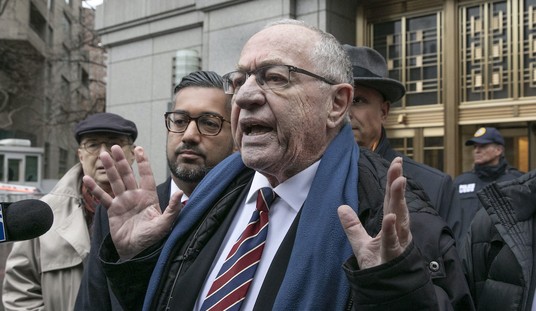I recently finished reading Paul Kengor’s important new book The Communist: The Untold Story of Barack Obama’s Mentor, Frank Marshall Davis, which I’m reviewing for a forthcoming issue of National Review. One of the points that Kengor raises is the question of how important a mentor is for any young person, especially when his relation to the individual he is mentoring takes place during the impressionable high school and early college years. Kengor argues that contrary to what mainstream journalists have claimed, Davis was a most influential figure in Obama’s life and a man who obviously led Obama to the very left-wing stance he took when he entered college.
Did Obama ever have a real conversion experience, and consciously move away from the type of politics that Davis espoused? The truth is that we don’t know, since our president has never been upfront about it at all. Many people, of course, have moved from communism to either social democracy, liberalism, or conservatism. The late Irving Howe departed from Trotskyism to become a social-democrat; Whittaker Chambers moved from communism to a deep religious conservatism; in our own time, my friend David Horowitz moved from the ranks of the communist left to become a major conservative intellectual and activist.
Readers of my own memoir, Commies: A Journey Through the Old Left, the New Left and the Leftover Left, know that over many years, I too began a long move away from the left-wing milieu in which I grew up. One of the chapters in my book is about what I somewhat facetiously call “the Commie high school” that I attended from 1949-1955, the “progressive” Elisabeth Irwin High School in New York City’s Greenwich Village. Begun by Irwin, a disciple of the educational philosophy of John Dewey, the school became a virtual who’s who of the emerging Old and New Left from the 1930s through the 1970s. Its graduates include the Weather Underground’s Kathy Boudin; the Communist African-American leader Angela Davis; the late folksinger Mary Travers of Peter, Paul and Mary; the former publisher and editor of The Nation, Victor Navasky; the wives of both Harry Belafonte and Pete Seeger; and the sons of Ethel and Julius Rosenberg, Michael and Robert Meeropol. The elementary school is named the Little Red Schoolhouse, and many of us called it “the little Red schoolhouse for little Reds.”
Recently, I was interviewed by a writer who is working on an official history of the institution. He asked me to take a guess as to how many of those who taught at the school when I attended were actually members of the CPUSA. I told him that all the teachers were either sympathizers or fellow travelers, but I could only say for certain that I knew two or three who were definitely members. I was shocked when he told me that, in fact, almost everyone teaching when I was there was an actual CP member, and that even the school’s principal was a communist (I thought of him as simply a left-leaning civil libertarian).
So the questions arise. What paths did the graduates of that era take? Have any of them changed and broken out of the left-wing box in which they were educated? Aside from myself, I know of only two others, Abby Thernstrom and Elliot Abrams. At the last class reunion I attended, almost all my classmates had the same views they held when they attended EI.
All of this came back to me when a member of the class of 1954 e-mailed me the following report he sent to his class newsletter about the trip he recently took to the Castro brothers’ workers’ paradise, Communist Cuba. What follows is what this EI graduate wrote just this past week, in August of 2012:
Dear Sisters and Brothers,
I know that some of you have strong opinions on Cuba, but I didn’t go as a political analyst, I went to see and photograph the architecture and I was impressed by the concern for historic preservation and the success of the restoration program in Habana Vieja. I went legally on what is called a general license for full time professional research. I could have gone on my own and I intend to go again, but I went with an educational tour group of mostly teachers and got to see many places that I wouldn’t have on my own which included Santiago. So I got to see some of the rural areas by bus and boat. Of course the tour guide worked for the government, but I found him to be very candid in his answers to our questions regarding the successes and failures of the revolution and I learned a lot about how the country is actually governed which doesn’t seem all that different from our own. In my opinion all governments infringe on personal freedom. I was very impressed with the achievements of the literacy program and the totally free education system through college and graduate school. I spoke with Cubans and was told that the free health care system is excellent. The country is poor and struggling, but this is mainly due to the U.S. embargo. My conclusion is that Socialism is alive and well in Cuba and the U.S better forget about regime change.
I spent a day on my own wandering around Havana before the tour group arrived and stayed in Havana another week after they left. The architecture of Havana amazed me. Unlike most cities in Latin America, the variety of eclectic styles from the Spanish Baroque, neo -Gothic, neo -Renaissance, Art Nouveau, and Art Deco are very authentic and sophisticated. Havana and Santiago were filled with tourists from all over the world. It is absurd that U.S. citizens are not allowed to go there. I was not aware of any military presence and found the local police to be very friendly and helpful unlike the police and guards armed with sub-machine guns on the streets of Mexico and Guatemala. There are no restrictions on where tourists can go in Cuba. As always on my travels I roam around the non-touristed neighborhoods and back alleys to see how people live and photograph street life, people at work and at play as well as buildings. I did notice that every shop and every home had a picture of Che Guevara ( a hero of mine too) on the wall and not Castro. I didn’t see any homeless emaciated dogs or beggars on the streets as in all other L. A. countries, but surprisingly I was constantly approached by beautiful young prostitutes. I was told that prostitution is illegal, but that the police ignore it. I took over 2000 photographs and it’s worth a trip to Cuba just to see the 50s cars. The poorest people will spend their last cent restoring one and resourcefully keeping it running. Did I just say, the poorest people? Yes there are rich and poor just like anywhere else, but not to the extremes as in the Capitalist world. And of course the music is everywhere, in the streets as well as the clubs. I went to several of the most famous clubs in Havana and Santiago where I danced and even took Salsa lessons. My most memorable evening was New Years in the central plaza of Santiago with hundreds of scantily dressed Cubans wildly dancing to live music under a spectacular display of fireworks. Certainly not an oppressed people. Go.
If anything, this man’s comments reflect how a supposedly educated individual, who became a successful architect, is nothing but one of the thousands of political pilgrims who, since the early days of the Bolshevik Revolution, went on solidarity tours, saw paradise, and came back to report in glowing terms on the great benefits of communism. Somehow they missed the real picture and did not see any evidence of the Gulag in Russia, the prisons in China, or the oppressive police-state conditions in Cuba. The story, for those interested, is best told in Paul Hollander’s classic book Political Pilgrims.
And so this graduate of EI’s class of 1954 follows in that same path. Notice his pure naiveté about how his tour guide gave honest answers that were “candid,” and how Castro’s Cuba is governed no differently than our own government is. Does this man not know about the thousands who braved their freedom to submit a petition demanding free elections, only to be met by arrest of those who wrote the petition and formal rejection of the demands by the government? He found the local police to be “very friendly,” unlike those in countries like Mexico and Guatemala. Evidently, he did not know about my experience during my trip in the 1970s. After taking a photo of ration lines a few blocks longs in front of a nationalized Woolworth’s store, I was promptly arrested by the friendly police and held in a cell for hours. I was told that I was guilty of taking photos that would be embarrassing to the regime.
Then this imbecilic man is surprised to find that he was regularly approached by “beautiful young prostitutes.” Does he ever read any reports available on the internet of what life is really like for Cubans? Sure, prostitution was declared illegal; the reality is that it is a safety valve for the regime. Its people are near starvation, and many do not have relatives in the USA who can send them money with which to get by. Middle-class students, housewives, and other women have no other way to feed their children and families than to prostitute themselves for the new sexual tourists from Europe who flock to Cuba instead of Thailand for cheap paid sex.
Then there is the fascination of how all those poor people spend so much time fixing those old American cars. Doesn’t it occur to him that with crowded and often impossible public transportation that is hardly available and without funds to buy American and European cars like the apparatchiks of the regime, they have no alternative if they are to get to work? But oh, they have wonderful music. For years the regime banned the musicians whom the leftist guitar player Ry Cooder made famous and brought back to the U.S., until they found that was a new source of income for the government. In the ’70s, U.S. rock and roll, rap, and later hip-hop was banned, and most recently, some of the new crop of young musicians emulating the most recent sounds from our country found themselves in trouble when they wrote lyrics slyly critical of the regime.
Finally, this useful idiot of the Cuban regime tells his classmates to also go to Cuba, so they too can dance wildly on New Year’s Eve with fireworks in the background among scantily clad women. Viva the Revolution! No pasaran! Isn’t Communism wonderful?
So the evidence is in. The mis-education one received in a leftist high school, freely existing in the midst of the so-called repressive McCarthyite years in the United States, is seen to have worked. Few who graduated, I am sad to report, ever allowed themselves to think outside the box and to grow up. The school song had a verse about how those who attended would always stay true to the traditions of the institution. It certainly seems, sadly, that so few of its graduates were able to resist holding on to the leftist traditions of their youth.









Join the conversation as a VIP Member